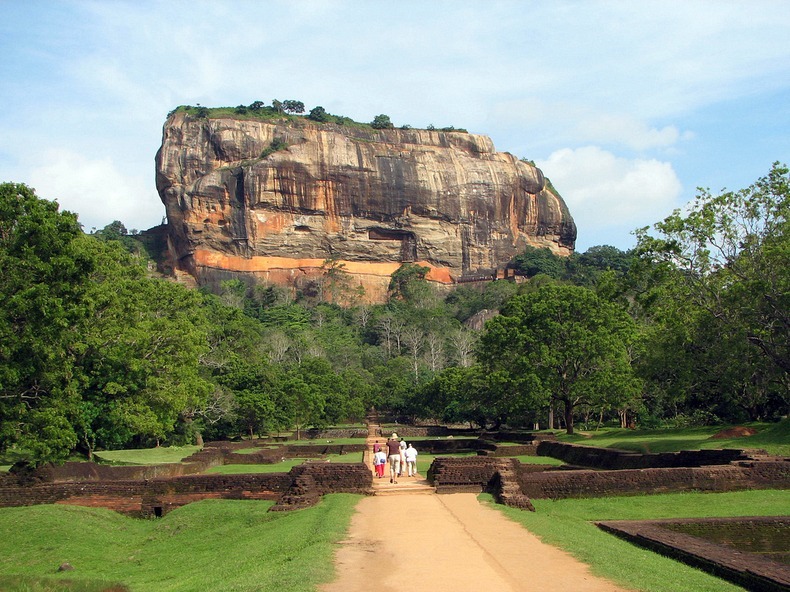Sigiriya or Lion Rock, in Sinhalese, is located in the central Matale District of the Central Province, Sri Lanka in an area dominated by a massive column of rock nearly 200 meters high. At the summit of the rock is the fortified palace built by King Kasyapa (477 – 495 AD), son of Dhatusena, who came to power after he engineered the assassination of his father and seized the throne which rightfully belonged to his brother Mogallana. Fearing the vengeance of the brother, Kasyapa had a fortified palace built on the rock of Sigiriya which was reputed to be impregnable. The rock is surrounded by two wide moats, where crocodiles were introduced. During the eleven years that Kasyapa resided in Sigiriya, he created a residence of exceptional splendor and founded his capital there, impressive vestiges of which are still visible today. Mogallana finally arrived and declared war on the King. After a short but cruel battle in 495, Kasyapa committed suicide by cutting his own throat. Moggallana returned the capital to its original location Anuradapura, and converted Sigiriya into a monastery complex.
The magnificent rock fortress is visible for miles from all directions and dominates the surrounding plain. At the foot of the rock are the two quarters of the lower city which are defended by a massive wall, and the aristocratic quarter of the capital of Kassapa I, noteworthy for its terraced gardens embellished by canals and fountains, that extend for some hundreds of meters out from the base of the rock.
There is a stone stairway leading from the base to the top of the mountain. About half way to the top, there is a pair of giant lions paws which once served as the entrance to the royal palace. There is evidence to show that the lion structure was originally much larger and extended – head and shoulders out of the rock in a crouched position. The cuts and grooves on the rock above the paws indicate that the lion structure- built with brick masonry and limestone, presumably with a timber framework, was some 14 meters in height.
The palace ruins now mostly consist of retaining walls and foundations. No one is exactly sure of the exact functions of the various spaces. The only surviving relic are the frescoes that adorn the rock surface. The paintings would have covered most of the western face of the rock, covering an area 140 meters long and 40 meters high. There are references in the graffiti to 500 ladies in these paintings.
Sigiriya today is a UNESCO listed World Heritage Site and one of the most visited historic site in Sri Lanka.

Further reading: Wikipedia, Amazinglanka, UNESCO


















Comments
Post a Comment